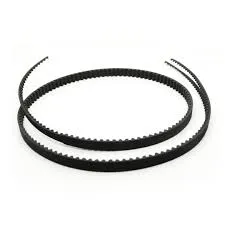- Arabic
- French
- Russian
- Spanish
- Portuguese
- Turkish
- Armenian
- English
- Albanian
- Amharic
- Azerbaijani
- Basque
- Belarusian
- Bengali
- Bosnian
- Bulgarian
- Catalan
- Cebuano
- Corsican
- Croatian
- Czech
- Danish
- Dutch
- Afrikaans
- Esperanto
- Estonian
- Finnish
- Frisian
- Galician
- Georgian
- German
- Greek
- Gujarati
- Haitian Creole
- hausa
- hawaiian
- Hebrew
- Hindi
- Miao
- Hungarian
- Icelandic
- igbo
- Indonesian
- irish
- Italian
- Japanese
- Javanese
- Kannada
- kazakh
- Khmer
- Rwandese
- Korean
- Kurdish
- Kyrgyz
- Lao
- Latin
- Latvian
- Lithuanian
- Luxembourgish
- Macedonian
- Malgashi
- Malay
- Malayalam
- Maltese
- Maori
- Marathi
- Mongolian
- Myanmar
- Nepali
- Norwegian
- Norwegian
- Occitan
- Pashto
- Persian
- Polish
- Punjabi
- Romanian
- Samoan
- Scottish Gaelic
- Serbian
- Sesotho
- Shona
- Sindhi
- Sinhala
- Slovak
- Slovenian
- Somali
- Sundanese
- Swahili
- Swedish
- Tagalog
- Tajik
- Tamil
- Tatar
- Telugu
- Thai
- Turkmen
- Ukrainian
- Urdu
- Uighur
- Uzbek
- Vietnamese
- Welsh
- Bantu
- Yiddish
- Yoruba
- Zulu
ታኅሣ . 04, 2024 09:50 Back to list
Understanding Timing Belt Sizes for Optimal Engine Performance and Maintenance
Understanding Timing Belt Sizes A Comprehensive Guide
Timing belts play a crucial role in the functioning of internal combustion engines and other machinery. These belts synchronize the rotation of the crankshaft and the camshaft, ensuring that the engine's valves open and close at the correct times during each cylinder's intake and exhaust strokes. The correct size and fit of a timing belt are critical for maintaining engine efficiency and preventing damage. In this article, we will delve into the intricacies of timing belt sizes, including their dimensions, selection, and importance.
Dimensions of Timing Belts
Timing belts are available in various sizes and designs, each specified by a series of measurements. The primary dimensions that define a timing belt include its length, width, tooth pitch, and the number of teeth.
1. Length This is measured in millimeters or inches and refers to the perimeter of the belt when stretched out in a straight line. To ensure proper fitment, it’s vital to select the correct length based on the engine specifications.
2. Width The width of a timing belt is typically measured in millimeters. The proper width is essential to ensure that the belt fits snugly within the pulley channels, allowing it to transmit power effectively without slipping.
3. Tooth Pitch The tooth pitch is the distance measured from the center of one tooth to the center of the next tooth. This measurement is crucial because it affects how well the belt engages with the pulleys.
4. Number of Teeth This is simply the total count of teeth on the belt. Different engines will require timing belts with a specific number of teeth to maintain the correct timing synchronization between the crankshaft and camshaft.
Selecting the Right Timing Belt Size
When selecting a timing belt, it is essential to reference the manufacturer's specifications. Each engine model will have predetermined timing belt sizes that are engineered to work with its unique component arrangement. Using the incorrect size can result in misalignment, excessive wear, or catastrophic engine failure.
To determine the correct timing belt size, consider the following steps
timing belt sizes

1. Consult the Owner’s Manual The owner's manual usually contains information regarding the exact specifications for replacement timing belts. This is your best source for determining the appropriate size.
2. Check Existing Belt If you are replacing an old timing belt, you can measure the length, width, and number of teeth on the existing belt. However, this method should be used cautiously, as wear and tear can alter the dimensions.
3. Use a VIN Decoder Your vehicle’s Vehicle Identification Number (VIN) can also provide information about the engine model, which can guide you toward the correct timing belt specifications.
4. Seek Professional Advice If you are uncertain about which timing belt to choose, consulting with a mechanic or automotive professional can provide clarity and prevent costly errors.
The Importance of Proper Timing Belt Size
Choosing the right size timing belt is vital for several reasons
- Engine Performance A correctly sized timing belt ensures optimal engine performance, as it maintains proper timing between the crankshaft and camshaft.
- Longevity Using the correct size reduces wear and tear on the belt and associated engine components, extending their lifespans.
- Avoiding Damage An improperly sized belt can slip or break, leading to severe engine damage, including bent valves, damaged pistons, or complete engine failure.
In conclusion, understanding timing belt sizes is essential for anyone involved in the maintenance or repair of an engine. By adhering to specified dimensions and selecting the appropriate timing belt, you can ensure that your engine operates smoothly and efficiently while minimizing the risk of damage. Always remember that when in doubt, consulting with a professional is the best course of action to protect your investment and ensure reliable performance.
-
Korean Auto Parts Timing Belt 24312-37500 For Hyundai/Kia
NewsMar.07,2025
-
7PK2300 90916-T2024 RIBBED BELT POLY V BELT PK BELT
NewsMar.07,2025
-
Chinese Auto Belt Factory 310-2M-22 For BMW/Mercedes-Benz
NewsMar.07,2025
-
Chinese Auto Belt Factory 310-2M-22 For BMW/Mercedes-Benz
NewsMar.07,2025
-
90916-02660 PK Belt 6PK1680 For Toyota
NewsMar.07,2025
-
drive belt serpentine belt
NewsMar.07,2025

